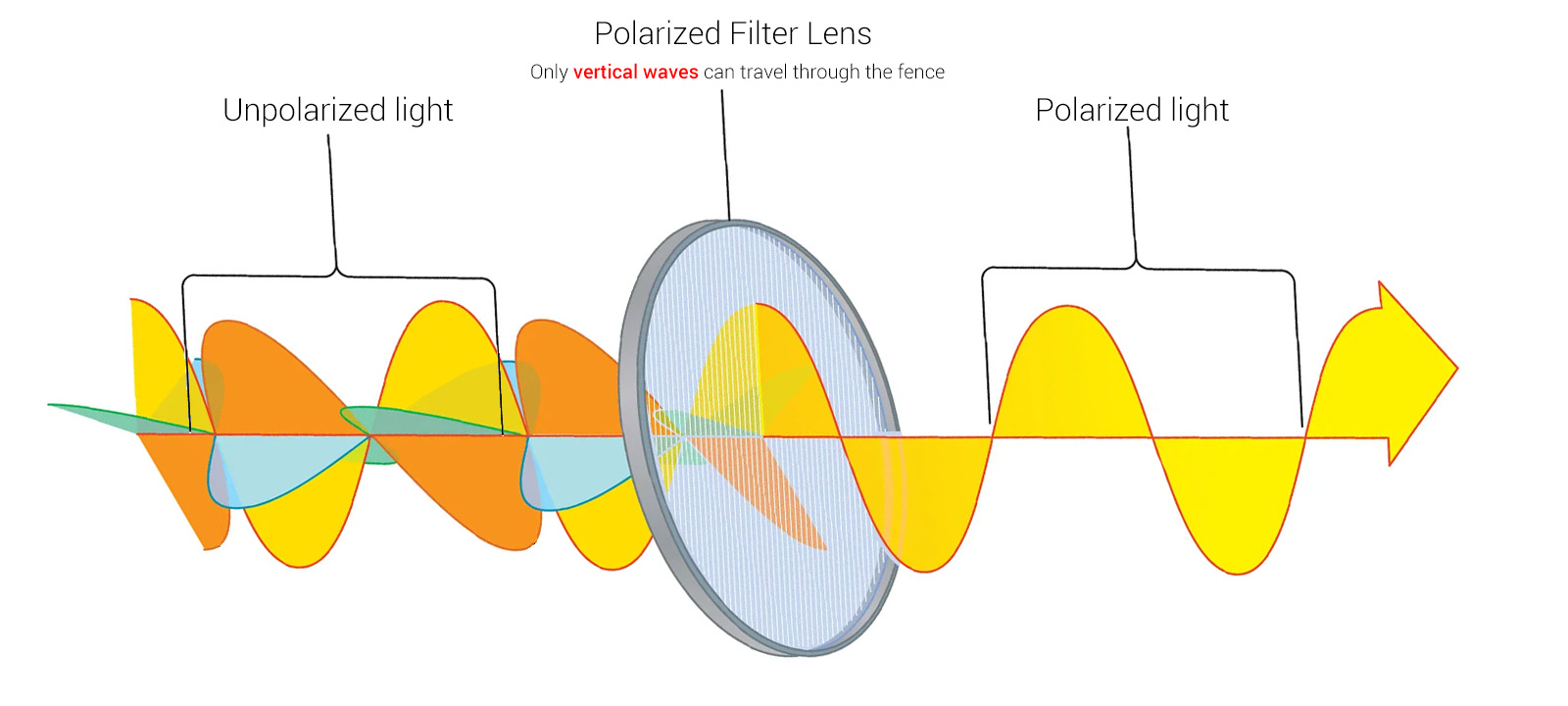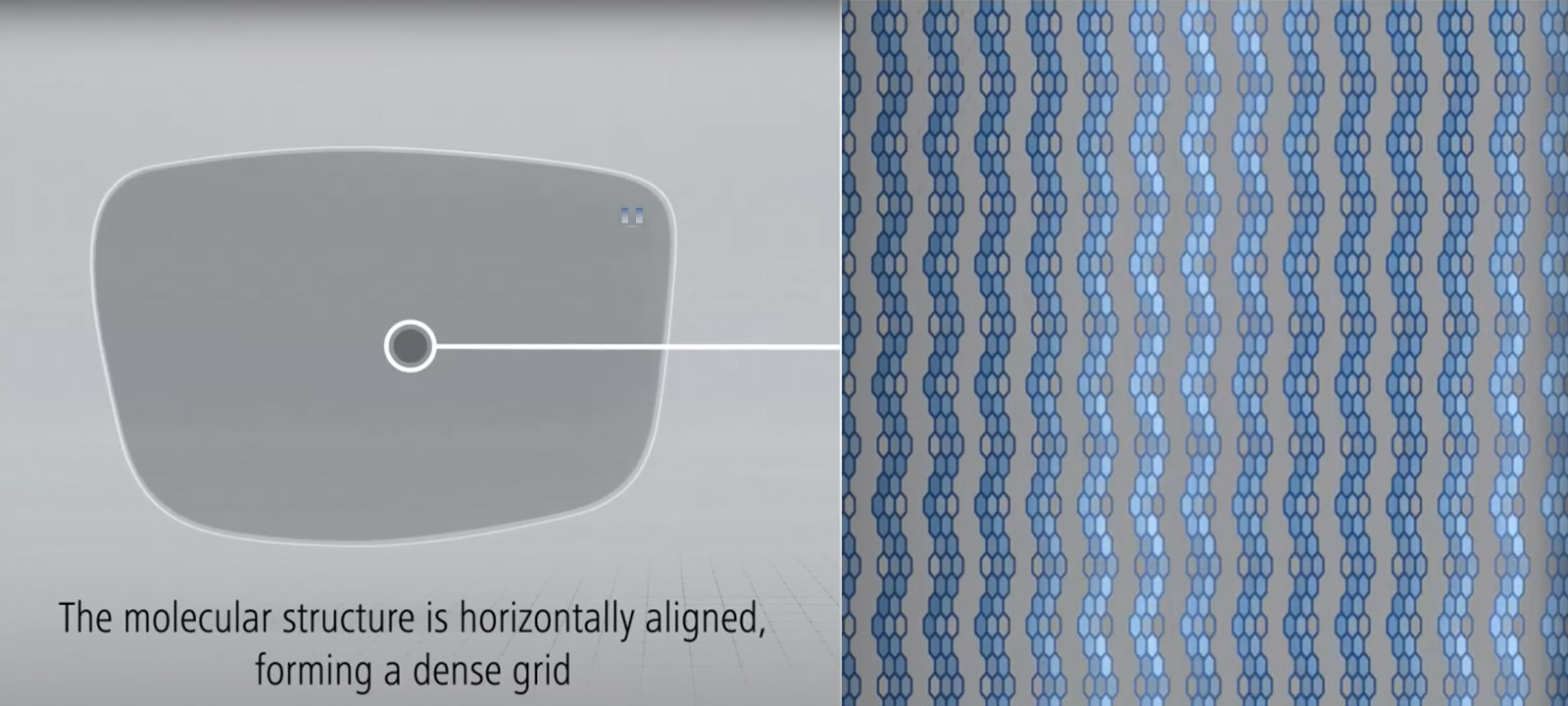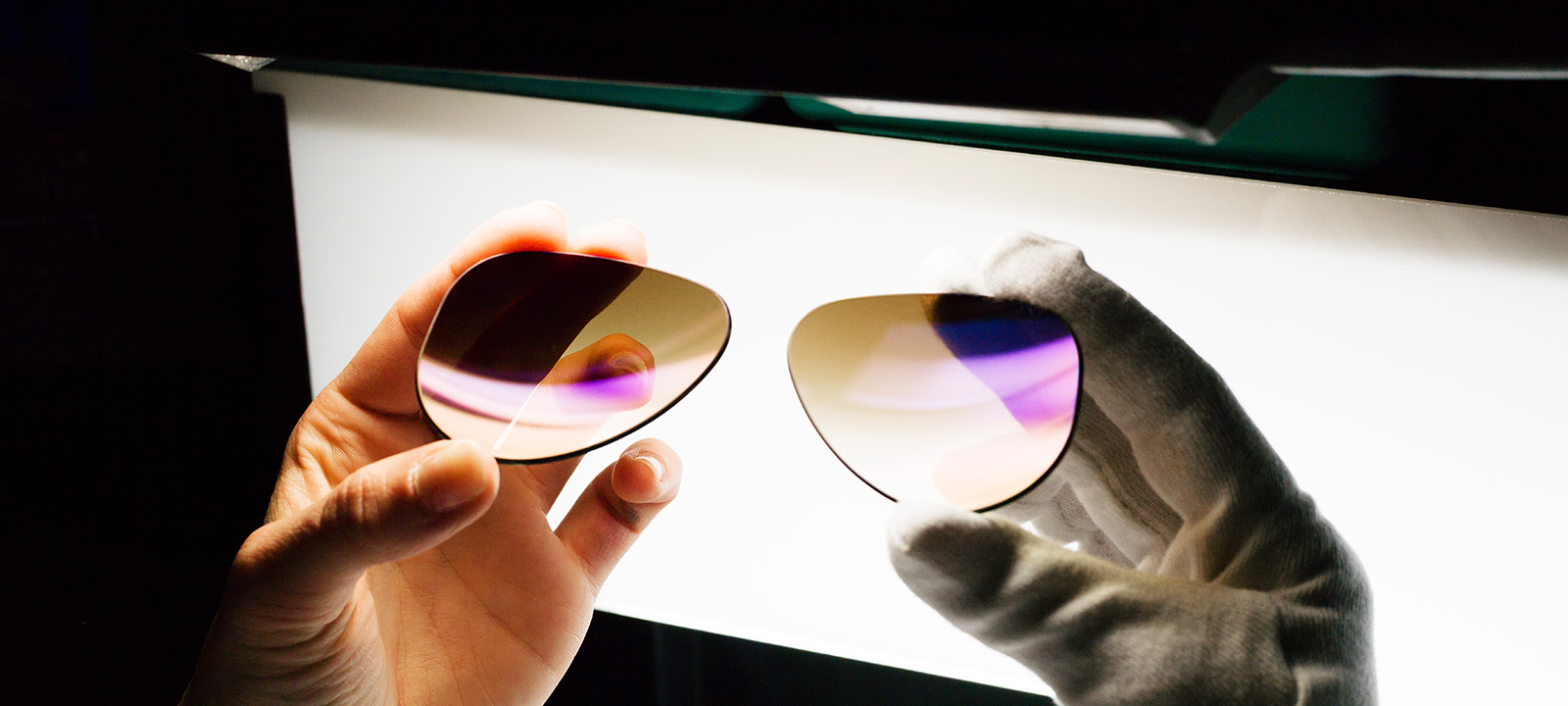What does polarised mean, and how it works?
Natural light travels in all directions, so it’s described as “unpolarised”. When rays of light are reflected by a surface such as water, snow, wet roads or windows the reflected light rays will be aligned. Basically this means that light rays that usually reflect in various directions will mainly be reflected in a single direction, so they are polarised.The majority of this light is horizontally polarised, i.e. it is arranged horizontally.
Polarized lenses are like a fence when the whip is fed between the slats of a fence. Only the vertical waves can get through. The side-to-side waves would be blocked. A polarized filter blocks reflected glare in the same way. The horizontal waves are blocked.

Accordingly, the molecular structure of special film technology used in polarised lenses is horizontally aligned to form a dense grid. The horizontal waves are then absorbed by the highly-efficient grid structure. Glare is created when light rays bounce off a horizontal shiny surface such as water, sand, snow, or roads. Polarized lenses allow in the vertical light providing us with clear vision but they also have a special filter to keep OUT and absorb the horizontal light caused by glare. As a result, distracting and potentially dangerous reflections are practically eliminated by polarised lenses. In addition your colour perception will be more vibrant. High-quality lenses will also fully protect your eyes against harmful UV rays.

TAC Polarized Lenses
Tri Acetate Cellulose (TAC) polarized lenses feature a new lens technology formulated for superior visual and polarization clarity. They have a scratch coating and block 100% harmful UV rays up to 400 nanometers. These lenses are very lightweight and highly impact resistant.
A high-quality pair of sunglasses will usually have polarized lenses. Here are a few advantages of this type of lens:
Here are a few advantages of this type of lens:
Increases your visual comfort
Sharpens the contrast between light and dark
Makes objects clearer
Reduces eye strain
Allows you to see true colors
Reduces reflections and glare
How to Demonstrate Polarized Lenses and Quality Check
Polarized lenses need to fit with the film at the correct axis in order to block horizontal glare. The axis of the polarizing filter is placed 90° to the plane of the polarized light. The 180° or horizontal axis of the lens is oriented 90° from the polarized axis. The best way to demonstrate a polarized lens is to find a reflecting surface such as a countertop or car hood. Look through a polarized lens that is turned 90° off-axis and the reflected light will be visible. Then rotate the lens on the axis to see that the glare is eliminated.
The best way to check the quality of polarized lenses is to place two of them, front to front, with the axes parallel. If aligned on the same axis, the light will travel through the lenses. If one lens is rotated 90° off-axis, no light will pass through the lenses. Higher quality polarized lenses will block out more visible light with this technique than lower quality polarized lenses.

